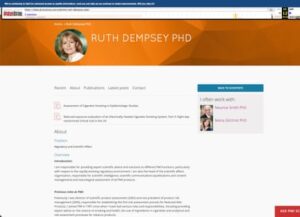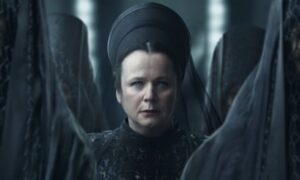In 1968, three people decided to cure infertility. In the 10 years between 1968 and 1978, Robert (Bob) Edwards, a scientist, Patrick Steptoe, an obstetrician, Jean Purdy, an embryologist, worked together, with many others, to do something incredible. Basing themselves in an outbuilding at Oldham general on scraps of money, with nurses volunteering their time, and patients their patience, they worked incessantly on the issue of infertility.
Bob had had a number of breakthroughs working with mice and rabbits, and thought that with Patrick’s innovations with laparoscopes (keyhole surgery), there was a possibility that tubal infertility could be, at least partially, cured.
They faced a mass of opposition, societal and medical. They argued that infertility was a disease as deserving of attention and cure as any other. They were told that they were playing God, that they risked creating Frankenstein babies, that society was overpopulated as it was. The British medical establishment – rather than rewarding their progress – set out to destroy and decry their achievement. They fought on, despite everything, and managed to do something truly great: Louise Joy Brown was born on the 25 July 1978. There are now 12 million more children on the planet because of them. Born to people who otherwise wouldn’t have been able to have them.
It is, without doubt, one of the great medical breakthroughs of the 20th century. It is an amazing British story, one which I don’t think many people know. And it’s the reason why my partner and I have a child.
It took Rachel [a comedy agent] and me seven rounds of IVF to have Elliott. What started as a journey where we told everyone, and almost celebrated doing it, became a brutal and dark time. Two years after we had him, Rach told me she’d been ready to leave me had IVF not worked for us. She wanted me to have a child and decided I wanted and needed children more than I wanted and needed her. This wasn’t true. But it was what she was thinking.
I’m going to quote her exactly here: “I felt that it wasn’t fair as the issue was mine. I was so desperate to have a child, I imagined you must have felt the same pain. It took over my life in so many ways, and everywhere I looked I couldn’t escape it; pregnancies being announced, babies being born. I’m glad Instagram reveals weren’t a thing then. Or at least I wasn’t aware of them.”
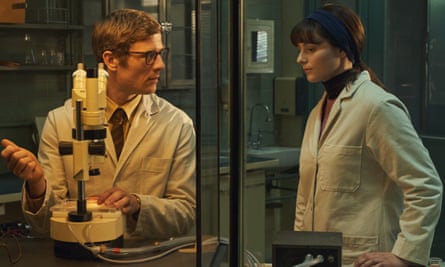
Now, ask anyone who knows us, and they’ll say I’m the lucky one of the partnership. In fact, you only need meet us for five minutes and you know it. My own dad, on the day before our wedding, told me: “If you mess this up, I will probably never forgive you.” I never wanted children before I met her, she knew how much I loved her, but she couldn’t get this thing out of her head – failing IVF was failing me.
We both feel ashamed of that time, me with more reason. The fact that I didn’t see her pain, the fact that I didn’t reassure her, the fact that – as with a lot of things – I was very goal oriented (I used to quote fertility statistics at her after every failure: “the next round our percentage goes up 2.3%”, etc). I let her down and left her in a very lonely place. I say all this because, I think, it is illustrative of the damage infertility can do.
A damage that I hope fills every part of the film we wrote together, Joy.
And the love and the joy we’ve had from Elliott I hope fills it too.
It all started with an email from my friends Finola Dwyer and Amanda Posey. They’re a brilliant producing pair, makers of such incredible films as An Education and Brooklyn. They knew about Rachel and I’s fertility journey, in fact Amanda had been on a similar journey herself with her own IVF child. They told me that Pathé was looking to make a film about IVF.
It was a subject I knew a little bit about because of Elliott. In fact, I’d pitched a play about it to the Manchester Royal Exchange, but I pitched badly – mainly talking about Edwards’s mice – and they turned me down. Cameron McCracken, who ran the film division at Pathe, had a new way in. Telling a story around the character of Jean Purdy, the nurse and embryologist who worked with Bob and Patrick and a woman ignored in many people’s celebration of IVF. I showed the idea to Rachel, and she said, “You have to do it.” After sleeping on it for the night, I suggested at breakfast the next day – “Why don’t we do it together?”
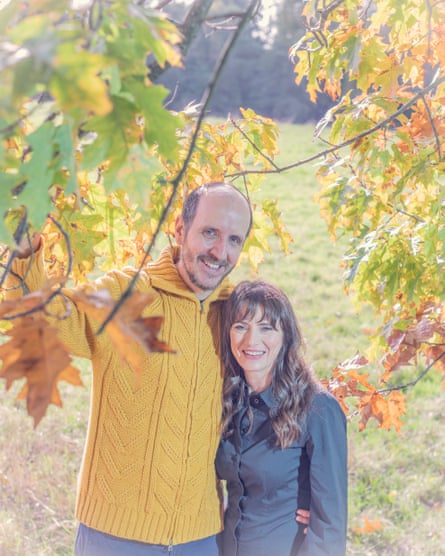
It took her a beat before she reluctantly agreed.
This wasn’t something I did lightly and it wasn’t something she agreed to lightly. I have a slightly manic relationship with writing, of which she was well aware. She’d seen and understood a lot of me, but we’ve never been the sort of couple who wanted to share everything. I am autistic and temperamentally a loner. Writing is my safety net and governs a lot of my relationship with the world (are you seeing now how I am the lucky one?). When I am at my worst, Rachel will literally send me away to write. Sharing this with her, and she with me, meant her seeing the final part of my brain, my hidden bit. She was as nervous of this as I was.
But I couldn’t imagine doing it without her. Partly because Rachel has far more understanding of infertility than I do. After our experience, she’d made it her duty to do more for people going through it, volunteering for the Fertility Network and running a monthly support group. But mainly because writing is an empathy leap that relies on biography. Even when writing a furious fallen angel, there are pieces of your past you put together to build that fallen angel. In this case, I didn’t want to pick apart that piece of me without her picking it apart with me. The word “survivor” is a grand word that’s often misappropriated, and maybe it would be misappropriated here, but going through IVF was the hardest thing we’d ever done, and I wanted to work on this with her.
And thankfully, she wanted to work with me.
Now this was bang in the middle of Covid, so we immediately started excavating, albeit from our locked-down home. Diving into archives. Reading everything we could. Watching everything we could. And talking to everyone we could. We’d spend the lockdown day with Elliott, I did home school in the morning (as I mentioned, I’m very goal oriented/the boring parent), she did play in the afternoon. Then in the evening we would sit and Skype or Zoom with someone from this history. Jenny Joy, Edwards’s daughter, helped us talk to everyone involved. Because of her generosity and the generosity of so many people, we were able to talk to a number of key sources who helped us uncover this extraordinary story.
Patrick and Bob wrote a beautiful book – that was our base, everything else we tried to build on top of that. We’d find out shards of information and slowly that jigsaw puzzle of 1968-78 came puzzlingly into the light.
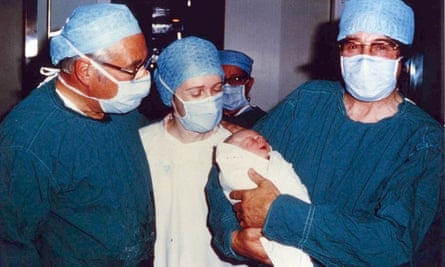
Andrew Steptoe, Patrick’s son, told us extraordinary stories about his father’s life in the second world war, of him having to make extraordinary decisions on a rescue raft. We got insight into his family life, and love of music. But the bit we found most moving was that Patrick was one of three obstetric consultants at Oldham, but the only one who’d perform newly legalised terminations, so he did them all. We never wanted this to be a film about women wanting babies, we wanted this to be a film about people having the choice whether or not to have babies. Suddenly, in Patrick, we had the ability to play this through the choices he made.
We read as much as we could about Muriel Harris, with whom Patrick worked. Arguably the second woman excluded. An incredible operating theatre superintendent who found ways of making a largely volunteer rota work. Our favourite Muriel fact? That when she finally retired from Bourn Hall, the fertility unit they’d set up together, she decided to get her pilot’s licence. She succeeded in her 70s. I cannot tell you how many times we wrote that into the post-credits sequence at the end of the film. I am gutted it had to be cut.
Bob’s effervescence was legendary. Everyone we talked to talked about ideas and thoughts tumbling out of him. An hour in his company would be overwhelmingly full of exhausting thought. He never stopped making and thinking and doing. He even runs for parliament halfway through the film, an act which needs far more time than we can give it. His relationship with Ruth, his wife, and his children, was full of discussion and chaos. A true genius, whose pathway to genius was a really complicated road. You could make an entire eight-part TV series about Bob, and only capture half of him.
And then there was Jean. The most private of all of them. We knew we wanted her to be central, but her centrality was dependent on knowing enough to build her out.
The tragic part of Jean’s story is that she was the first of the IVF group to die. She passed at the age of 39 from a malignant melanoma. Her final days were spent in a specially prepared room in Bourn Hall. She died in a place she made, and a place she loved.
She was instinctively someone more comfortable in the background, and she left very little record of her life.
We kept on trying to find her brother, but discovered he’d died. We were desperate to get hold of her notebooks, but they couldn’t be found. Rachel got in contact with the Churchill Archives Centre, which holds Bob’s notebooks, articles, letters and lectures, and we started to piece her together.
We questioned everyone about her, and discovered increasingly large slivers of information. About who she was and how she lived. Rach and I liked the way Louise Brown described her as “my first babysitter”. In the lab, she was the first person to witness the cell division of the embryo that would become Louise. But our most moving conversation, and the one that shed most light on Jean, was with the remarkable Grace MacDonald. In 1979 Grace gave birth to the second IVF baby, Alastair. Grace gave us insight into the women at the heart of the programme, she even told us the name they gave themselves – “the ovum club”. She gave us a new angle on Jean. It was Jean who truly ran the ovum club, looking after all these mothers-to-be. It was Jean that made them central.
This film is not without its challenges. On the upside, these people have a clear aim, they know what they’re doing, and by the end – they do it. Unfortunately, it takes them 10 years and much of the time they’re on a road between Oldham and Cambridge. Progress, as with lots of science, comes in jumps and starts. If you marked off each year (we did) between 1968 and 1978, you’d see huge amounts being achieved during certain years, and more or less nothing in others. It doesn’t have the peanut-butter-smooth feeling that you might concoct if writing this without the facts.
Thankfully, it was a film surrounded by fertility love. Not just us, and Amanda, for Ben Taylor, the brilliant director of Catastrophe and Sex Education, who got involved. Ben had two IVF children and a drive all of his own.
With his engine now on board, we decided to make it feel like a sports film. I hope it doesn’t exclusively fit that archetype, but the engine is a sports one. This is a film where the final achievement is known, this is a film where the impossible is made possible, this is a film where no one bloody helps them. They do it despite the odds. It’s a miracle film. And sports films love a miracle.
But it’s a sports film where the stakes are gargantuan. It is a sports film which is literally about the essence of life, and the pain of being denied that life. My favourite scene in the film is one on a cold beach. Jean is talking to Trisha, one of the ovum club, and tells her that she’s jealous of Rachel, who has just achieved the first pregnancy. The words are nothing special, but the actors Thomasin McKenzie and Charlie Murphy, who play Jean and Trisha respectively, imbue it with such truth and simple beauty, and somehow it sums up the cruelty of fertility for me.
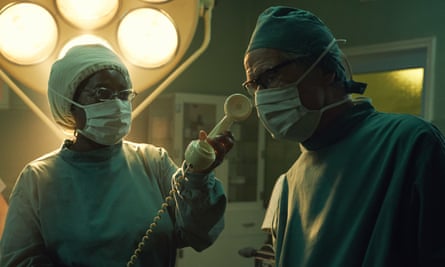
I think fertility is something we need to talk about. Uneasy though it seems to make everyone. Obviously, what’s happening in America makes IVF a particular issue right now. Doctors being frightened to help patients because their intervention may be deemed an act of abortion. Reproductive rights are being truly threatened. But I also think how we feel and talk about IVF in this country needs thinking about too.
IVF is now something you largely seem to pay for. Deemed a luxury good. It’s become a postcode lottery that favours those that go private. Louise Brown’s parents were working class: Lesley had a variety of jobs including working in a laundry, John was a lorry driver for British Rail. These were people who, when they first met, had been forced to sleep rough for a while. They were given the opportunity to have Louise through the bloody-minded perseverance of Bob, Patrick and Jean, and I think all three would be appalled that despite the progress made in IVF, other working-class parents are not given the opportunity now.
Bob, on his many appearances on TV and the radio, would always say that infertility is a medical problem like any other. My experience, and the experience of many of my friends, is that infertility is also something that can do enormous damage. In no way am I saying that everyone wants babies. But some do. I know we live in a time when the NHS is cracking at the seams. But the rationing of fertility care does not make sense to me. People need to have a choice about whether they have children or not. A choice that, if we truly still have national healthcare provision, should not be imposed wholly by the government. Rationing of care is rationing of care, and I don’t think fertility treatment should be rationed.
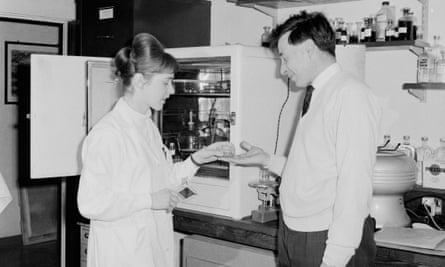
I think being an IVF parent is a privilege. Being any parent is a privilege, of course. But there’s something about struggling – really struggling to have a child – that changes your relationship with 2am wake-ups. The thing that unites all IVF parents is that we saw our kids when they were a dot on a screen or on a printout. Others get to see their babies when they’re orange sized or bigger; I saw Elliott as literally a speck. I wouldn’t change the way we made him and I am so grateful to Bob, Jean and Patrick that we were able to make him because of their chaotic, brilliant, ceaseless endeavour.
Hopefully, this film reminds everyone that fertility matters. Hopefully, it reminds people that IVF is a British story. Hopefully, it reminds people how brilliant British science is and can be. Hopefully, it has characters people care about, and some reasonable jokes. Hopefully, it’ll make people cry (hopefully in a good way). It is a film made with love, and not a little pain. It is a film about good people who are admirable and who do a truly magnificent thing. It is not an unvarnished truth, but it is ultimately a celebration of them. I love them, Rachel loves them, Ben loves them, Finola and Amanda love them, and hopefully this film is a love note to them.
Joy is in UK and Irish cinemas from 15 November and on Netflix from 22 November
Source: theguardian.com














